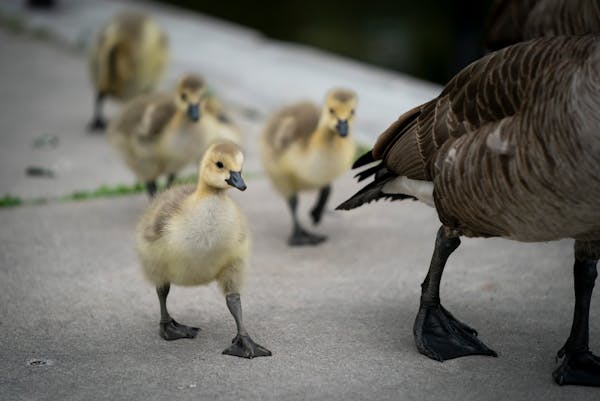Three weeks ago I said in this column that we could expect to see the first newly hatched goslings in early May, swimming with their parents and up on dry land grazing on new green grass blades.
I was wrong!
On April 26, master birder Tom Boevers from Faribault observed a pair of Canada geese with their newly hatched goslings. Also in Faribault, Tom saw these new migrants during the last week of April:
- Both sedge and marsh wrens
- Swainson's thrush
- Red-necked grebe
- Green heron
- Lark and Henslow's sparrows
- Whip-poor-will
- Gray catbird
- Northern waterthrush
- and blue-headed vireo
He also saw willets and American avocets, Franklin's gulls, and three first-of-year warblers: orange-crowned, palm and black-and-white.
Surprisingly, with all the overcast weather, plus cold and windy days, these migrants arrived on time, many after wintering in Central and South America and some in the southern United States.
This week in the metro area, the first Baltimore orioles arrived from Central America, and rose-breasted grosbeaks flew in from their winter homes in northwestern South America and Central America. Both of these were right on time. This tells us that a good share of the 300 or so migrating species that come to Minnesota for the nesting season or are passing through on their way to Canada were stimulated, too, by the change in the amount of daylight or the position of the sun.
So far only a small percentage of southern Minnesota farmers have gotten into their fields for soil preparation or planting. Those who don't get their corn planted by the first full week of May feel behind. Yes, we need warmer temperatures and more sunny days, but already cattle and horses can graze on lush green pastures.
In May, warm temperatures and showers work to continue the green-up process. It's usually the month of delightful weather along with many woodland wildflowers. Bloodroots, the white trout-lily and Dutchman's breeches are blooming. Lawns are growing and the first mowers can be heard. Gardeners plant potatoes and onions, and seed in leaf lettuce, radishes, peas and spinach. Common dandelions, tulips and daffodils are starting to bloom next to south-facing walls.
The ice continues to leave central Minnesota lakes. Also, as ice melts away from shorelines and open water areas become larger, common loons are returning to northern lakes here and in Wisconsin, filling the spring air with their enchanting calls and yodel-like songs.
Jim Gilbert has taught and worked as a naturalist for more than 50 years.






